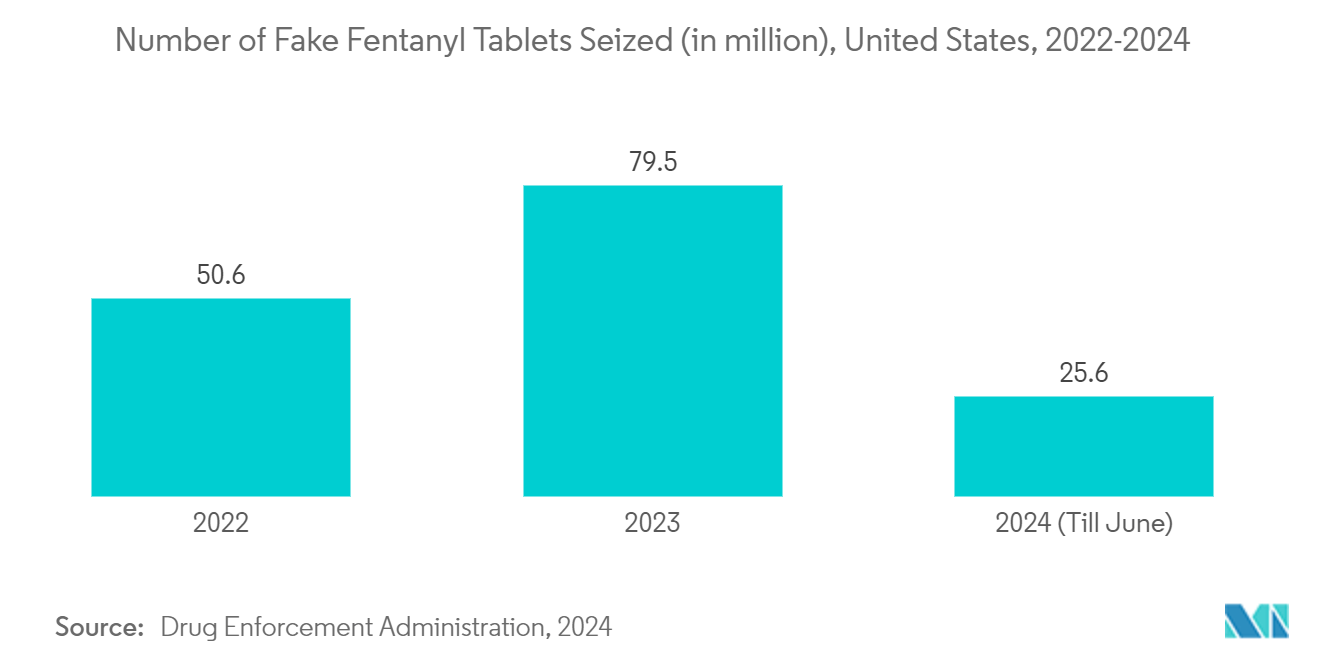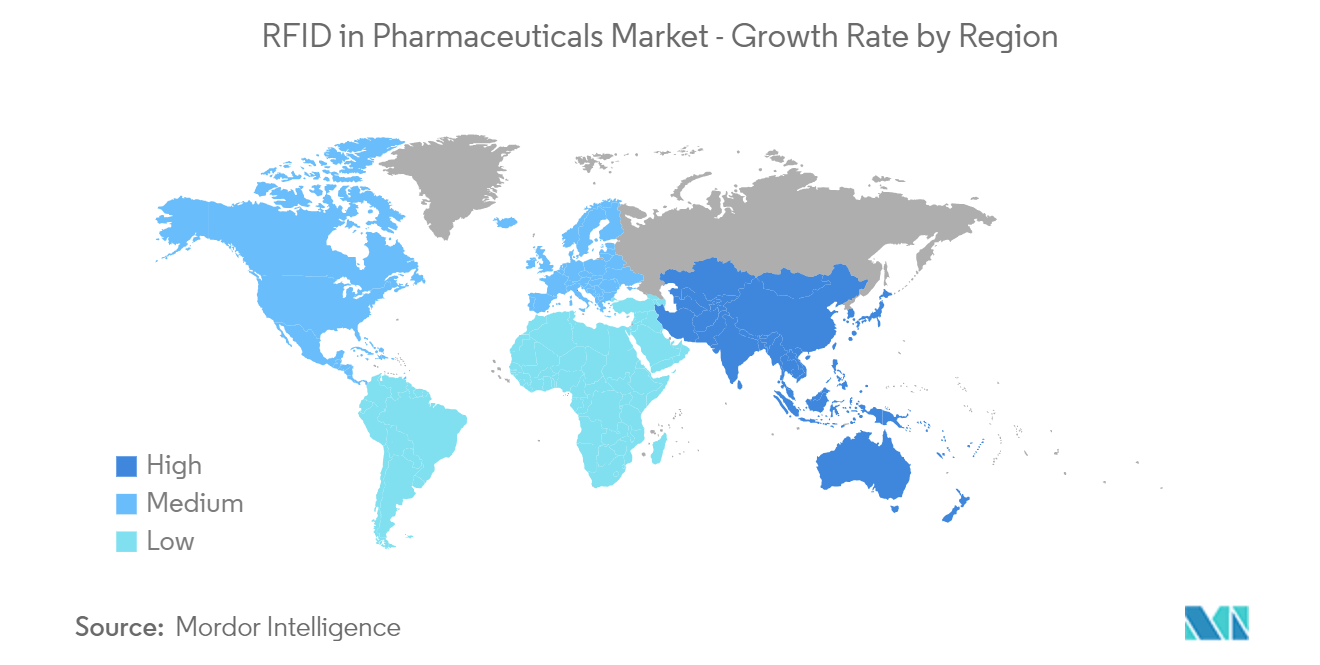Market Trends of RFID In Pharmaceuticals Industry
Drug Tracing Systems Segment Expected to Register a Significant CAGR Over the Forecast Period
The pharmaceutical industry has increasingly turned to RFID technologies to enhance visibility across the value chain and track falsified drugs. The escalating incidents of counterfeit drugs and drug recalls have compelled governments to reframe drug quality regulations and implement strict measures, making QR codes or RFID tags mandatory on active pharmaceutical ingredients and products for safety and tracking purposes. This trend is expected to drive the growth of RFID in drug tracing systems in the coming years.
For instance, an article published by the National Center for Biotechnology Information in 2022 reported that Valsartan, a long-term medication used in patients with high blood pressure and heart disease, was recalled due to contamination with N-nitroso dimethylamine (NDMA), a potential cancerogenic substance resulting from unintended changes in the manufacturing process in China. This highlights the pressing need for stringent quality control measures in the pharmaceutical industry to prevent the circulation of counterfeit and dangerous drugs, which is expected to boost the demand for RFID technologies in drug tracing and tracking systems.
Similarly, an article published by Forensic Science International Journal in September 2022 reported that counterfeit, fake, adulterated, or falsified drugs and pharmaceuticals could be branded or generic drugs, excipients, and active substances (in drugs and vaccines). The trafficking of counterfeit drugs has continued to increase in the last decade, contributing to the rising demand for RFID technologies to combat this problem.
The introduction of next-generation RFID tags and readers has enabled drug manufacturers and wholesalers in the pharmaceutical industry to prevent medical errors and increase the safety of individualized medicinal products. According to an article published by SpringerLink in August 2022, RFID technology can be used to overcome the black market problem of counterfeiting drugs or as a prevention tool. This further highlights the potential of RFID technologies in enhancing drug tracing and tracking systems.
Therefore, with the increasing number of counterfeit drugs and the growing adoption of advanced RFID technology, the segment is anticipated to witness significant growth over the forecast period.

North America is Expected to Register Significant Market Share Over the Forecast Period
North America is expected to grow at a significant rate in the market share during the forecast period, mainly due to the increasing prevalence of substandard and falsified drugs and stringent regulatory frameworks. The rising incidences of drug counterfeiting within large pharmaceutical and biopharmaceutical companies have emerged as a key driver for the growth of RFID technology in the pharmaceutical market.
For instance, in August 2022, Health Canada inspectors seized counterfeit erectile dysfunction drugs, including Viagra and Cialis, from a store in Scarborough, Ontario, Canada. These incidents are expected to further boost the demand for RFID in the pharmaceutical market in the region.
Significant advancements in RFID technologies and systems have also contributed to the market's growth. For instance, in November 2022, a membership-driven industry alliance that advances RFID technology in pharmaceuticals rebranded to UnitVisID Alliance as the new name for the DoseID Consortium in the United States.
Similarly, in August 2022, Kit Check, the leading automation vendor in Medication Intelligence, informed that its proprietary Radio Frequency Identification (RFID) technology was incorporated in the new KinetiX Propofol syringes being developed by Genixus, a pharmaceutical company and FDA-registered repackager and 503B outsourcing provider focused on transforming acute and critical care medicines.
Therefore, the market is expected to experience substantial growth during the forecast period due to the abovementioned factors, including the rising number of counterfeit drugs and key developments by organizations in the market.


